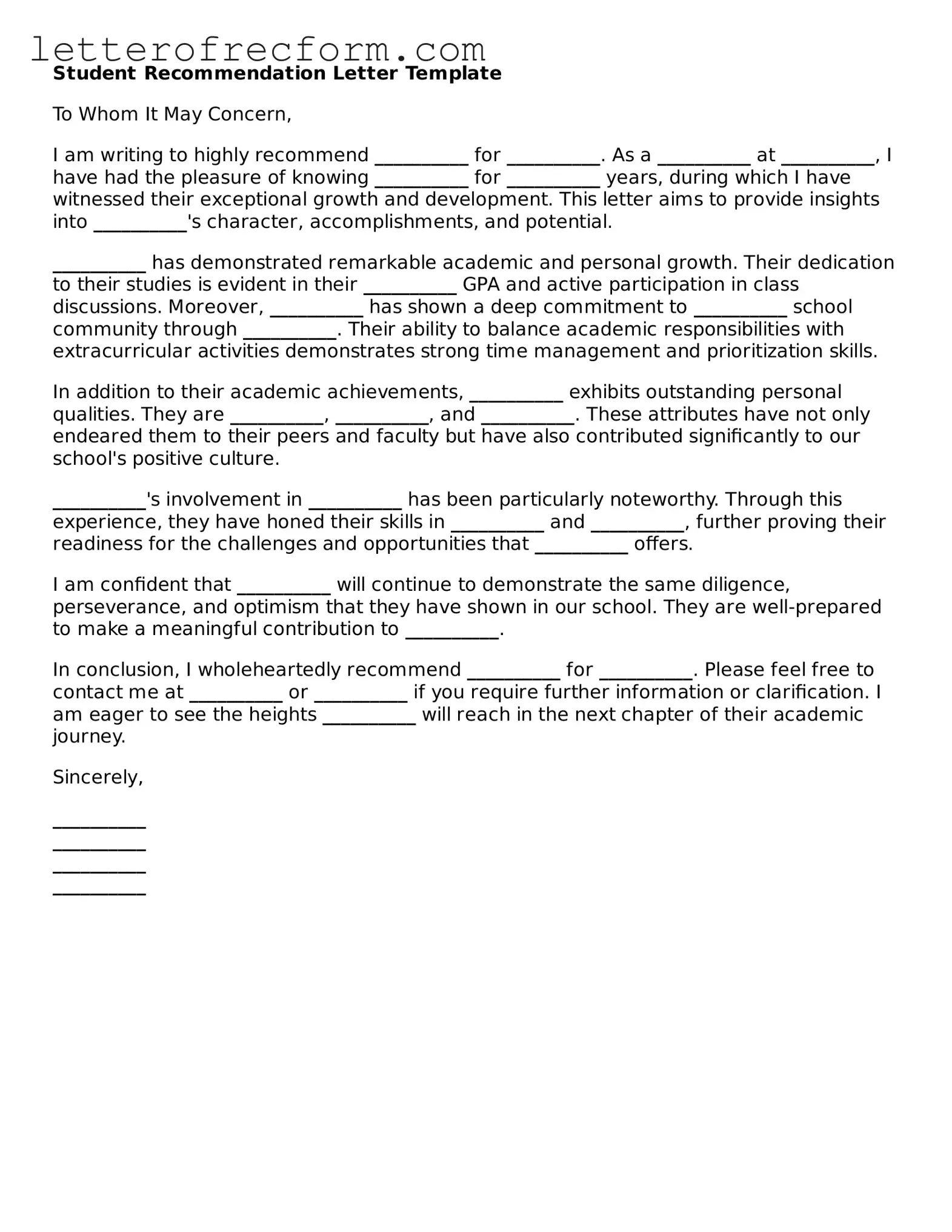Student Recommendation Letter Template
To Whom It May Concern,
I am writing to highly recommend __________ for __________. As a __________ at __________, I have had the pleasure of knowing __________ for __________ years, during which I have witnessed their exceptional growth and development. This letter aims to provide insights into __________'s character, accomplishments, and potential.
__________ has demonstrated remarkable academic and personal growth. Their dedication to their studies is evident in their __________ GPA and active participation in class discussions. Moreover, __________ has shown a deep commitment to __________ school community through __________. Their ability to balance academic responsibilities with extracurricular activities demonstrates strong time management and prioritization skills.
In addition to their academic achievements, __________ exhibits outstanding personal qualities. They are __________, __________, and __________. These attributes have not only endeared them to their peers and faculty but have also contributed significantly to our school's positive culture.
__________'s involvement in __________ has been particularly noteworthy. Through this experience, they have honed their skills in __________ and __________, further proving their readiness for the challenges and opportunities that __________ offers.
I am confident that __________ will continue to demonstrate the same diligence, perseverance, and optimism that they have shown in our school. They are well-prepared to make a meaningful contribution to __________.
In conclusion, I wholeheartedly recommend __________ for __________. Please feel free to contact me at __________ or __________ if you require further information or clarification. I am eager to see the heights __________ will reach in the next chapter of their academic journey.
Sincerely,
__________
__________
__________
__________
